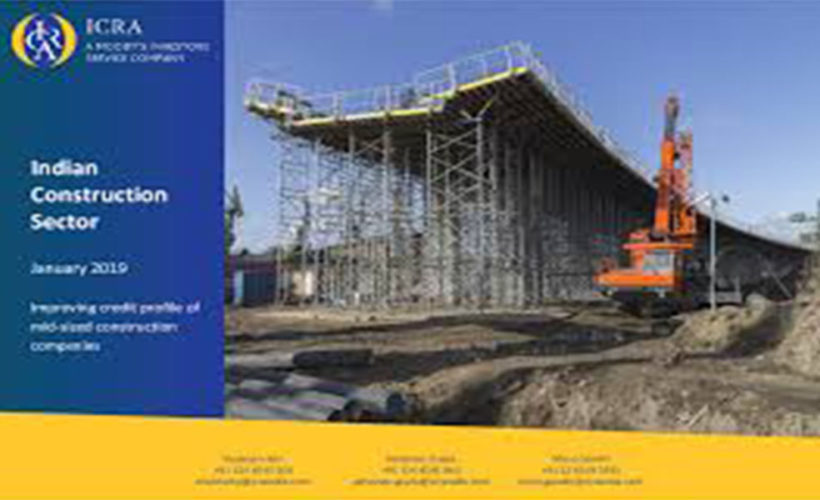
Construction players are in for better times with significant opportunities ahead, supported by the Government’s push towards infrastructure development projects. While the general elections in 2019 can result in some short-term disruptions in the awards, the trend is expected to remain positive over the medium term. As per an ICRA note, the last three to four years have witnessed a quantum increase in the infrastructure capital outlay, particularly in the roads, railways and the urban infrastructure segments, and this is likely to continue over the medium term. This has boosted the order book of the construction companies significantly, with most having an order book of over three times last year’s operating income. With the expected strong focus on infrastructure development by both the Central and the state governments, the construction companies should continue to see a healthy influx of new orders.
Says Shubham Jain, Vice-President and Group-Head, Corporate Ratings, ICRA, “Several mid-size construction companies (with operating income between Rs. 100-crore to Rs. 500 crore) have grown at a faster rate than the large construction companies supported by increased opportunities, relatively lower leveraged balance sheet and lesser legacy issues. With the improvement in operating performance of the construction companies, including healthy growth in operating income, and increase in operating profitability, the credit metrics of majority of companies have witnessed a gradual improvement. This is also reflected in the higher credit ratio (ratio of number of rating upgrades to number of rating downgrades) for the sector which has been close to 1.2x in the last three years. The average credit ratio between FY2015 to 4-months-FY2019 stood at 1.2x which is a significant improvement from the average of 0.4x between FY2011-FY2014.”
In comparison with the credit profile of large construction companies, many mid-sized companies exhibit better coverage ratios because of lower debts in their books. As these companies have been focussing only on the construction business, the requirement is limited to working capital debt and equipment loans, compared to their larger peers which have also ventured into developmental space like build-operate-transfer (BOT) projects, thereby blocking a part of the capital available for the construction business, resulting in higher leverage. Nevertheless, scale, regional concentration, and financial flexibility remain a challenge in comparison to the large construction companies which have better access to funds as well as credit terms.
ICRA notes that a gradual improvement in the credit profile of construction companies, particularly the mid-size companies is visible, many of which are graduating from sub-contractors to main contractors. Their focus on the core construction business as well as taking up projects in geographies which are in proximity to their base, are supporting execution.
Adds Jain, “On the flip side, the mid-sized construction companies remain exposed to challenges. With growth in operations, many companies plan to enter or have recently entered into asset-owning space, which being capital intensive can impact their balance sheet and liquidity positions over the short-to-medium term. Further, with the increasing scale of operations the working capital requirement, including bank guarantees, could also become a key challenge for players, and constraints on banks to increase exposure to the sector.”



